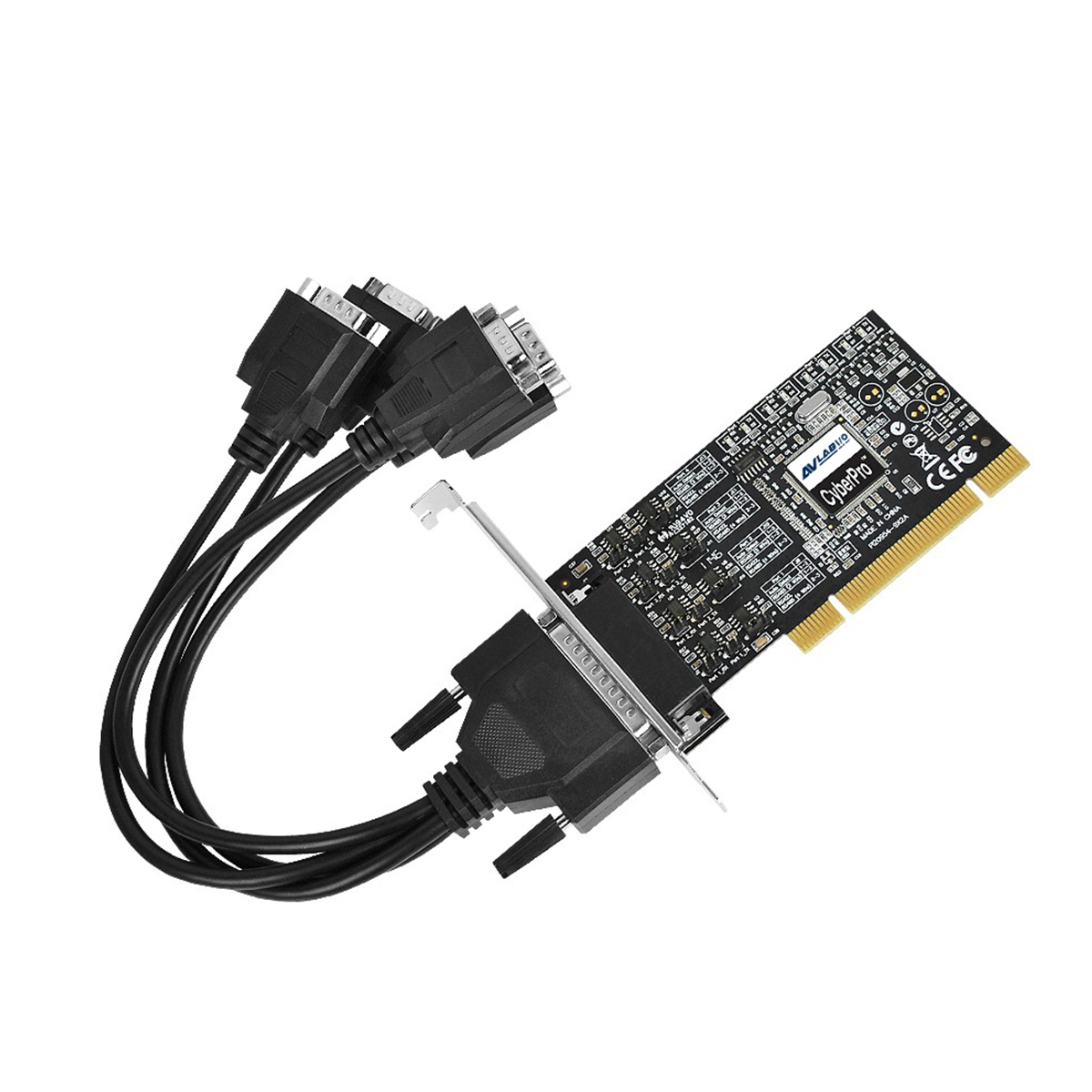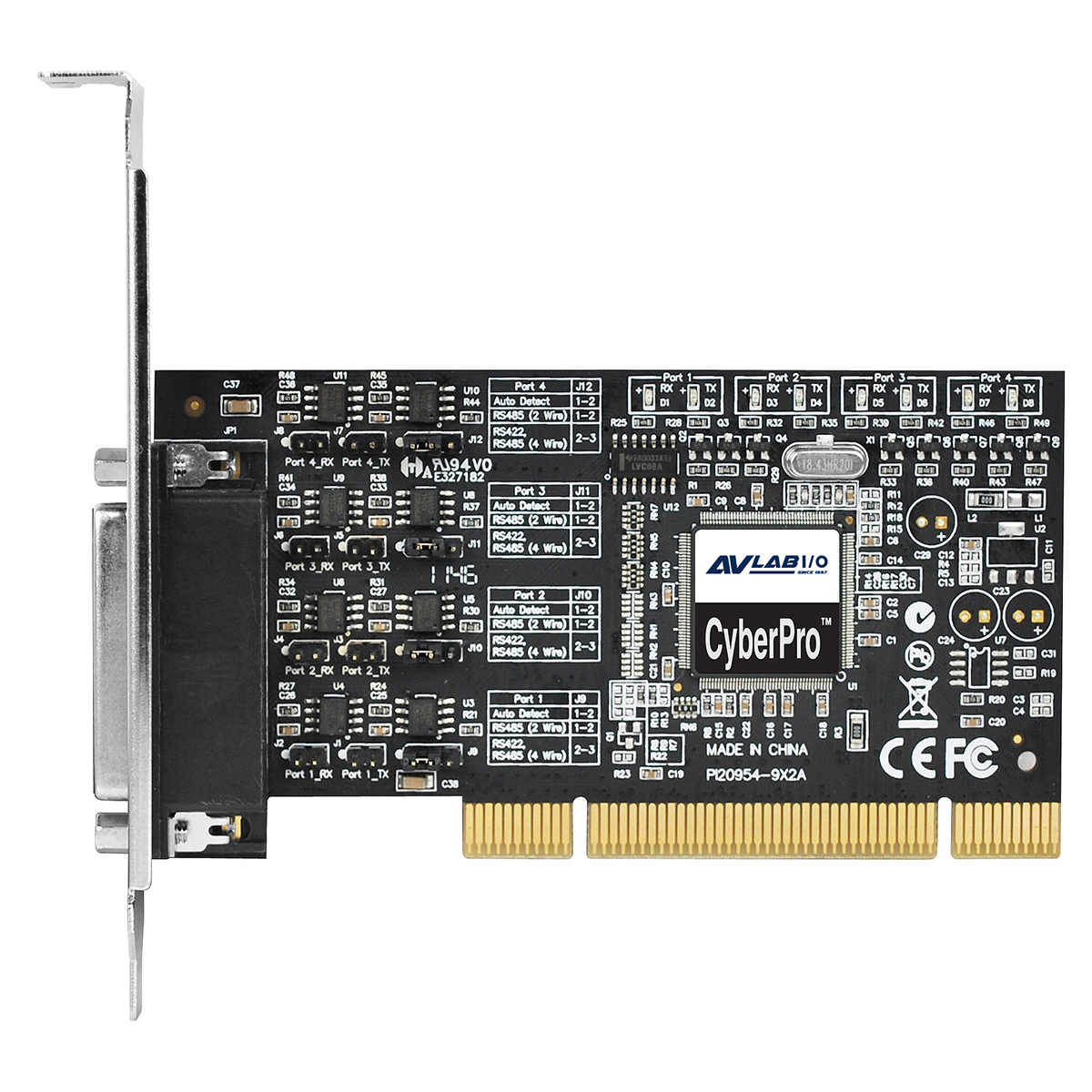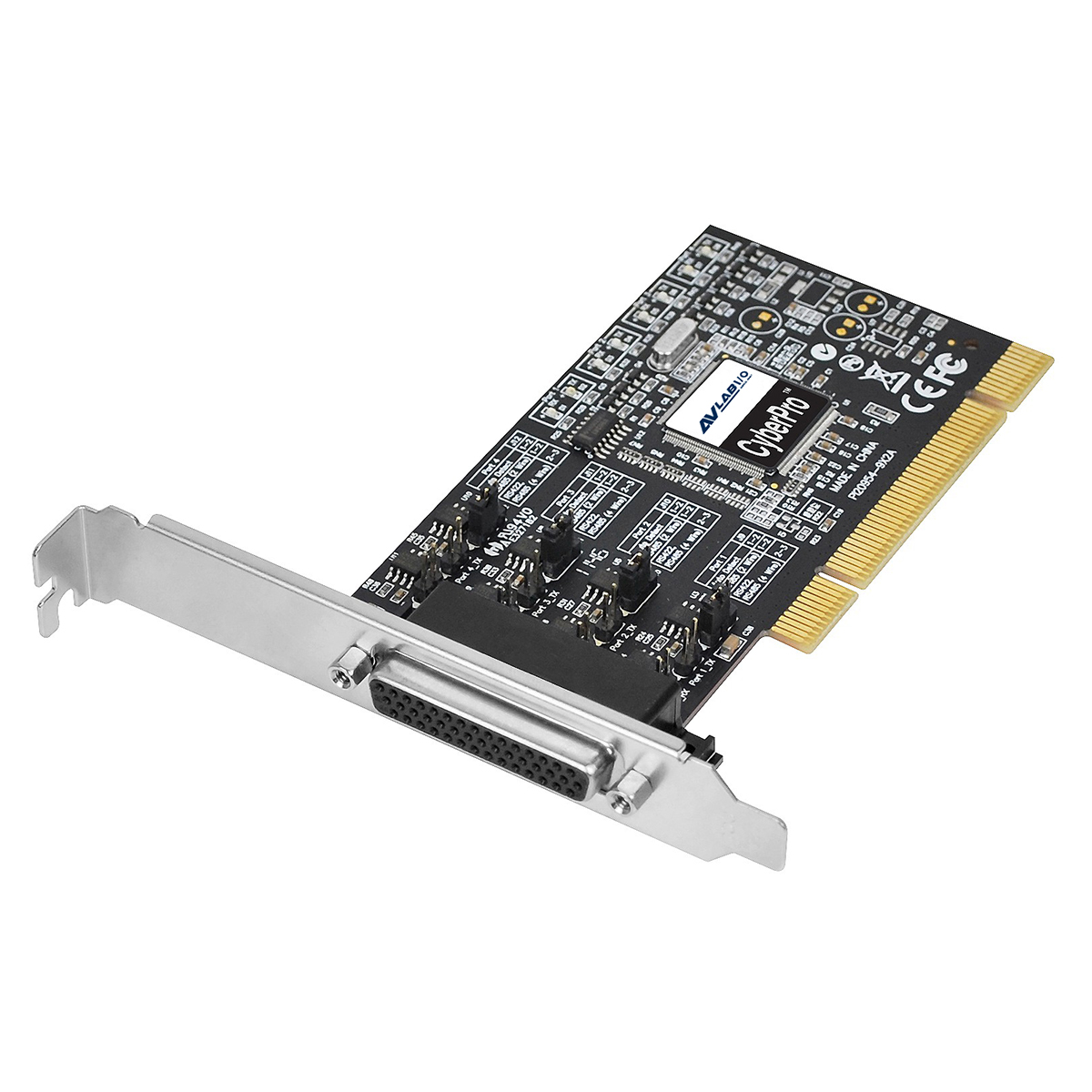- AVLAB-ID01-1
- AVLAB 4-Port RS-422/485 PCI Card, DB9 Port, 15KV ESD, 921Kbps, Dual Profile Bracket
■ Supports serial port data transfer rates up to 921Kb/s ■ Built-in 15KVDC ESD serial interface protection ■ Supports 3.3V and 5V PCI and PCI-X slots ■ Built-in 256-Byte FIFO buffer ■ Installs in standard height or low profile chassis with included brackets
Eigenschaften
HIGH SPEED DATA
Supports serial port data transfer rates up to 921Kb/s
ESD PROTECTION
Built-in 15KVDC ESD serial interface protection
PCI AND PCI-X SLOTS
Supports 3.3V and 5V PCI and PCI-X slots
FIFO BUFFER
Built-in 256-Byte FIFO buffer
FULL HEIGHT AND LOW PROFILE SUPPORT
Installs in full height and low profile chassis with included brackets
Spezifikation
Chipset: Oxford OXuPCI954
Compliant with PCI 3.0 specification
Compliant with Power Management 1.1
Full modem interface with hardware out of band flow control
UART: 16C950
On-chip deep 256-Byte FIFO in Transmit and Receive paths for each serial port
RS-422 and RS-485 auto detect and switch
Automated Xon/Xoff in-band flow control
Plug-n-Play, I/O address and IRQ assigned by BIOS
Form factor:Full profile / Low profile
Product
■ Dimensions: 5.27" (W) x 4.72" (H) x 0.71"(D)
■ Weight: 0.14 lbs
■ Color: Black
■ Interface: PCI, 32-bit
■ Connector: 1x 44-pin, DB44, Female
Fan out cable
■ Length: 8.27" (21cm)
■ 1x 44-pin, DB44, Male
■ 4x 9-pin, DB9, Serial, RS-232, Male
■ Color: Black
Environmental conditions
■ Operating temperature: 32 to 122 degrees F
■ Storage temperature: -4 to 140 degrees F
■ Operating humidity: 5% to 85%
■ Storage humidity: 5% to 85%
Certifications/Standards: FCC, CE, RoHS
Warranty: Lifetime limited
Country of origin: China
FAQ
- How do I confirm that Windows detects my expansion card?
- To confirm that Windows detects your expansion card, complete the following: Press the Windows key+R, type devmgmt.msc, and press Enter. In Device Manager, under the appropriate heading, confirm that your expansion card is listed and that there isn't an exclamation mark next to it. For example, a RS-422/485 controller card would be under Ports (COM & LPT)
- How do I confirm that Windows detects my USB device?
- To confirm that Windows detects your USB device, complete the following: Press the Windows key+R, type devmgmt.msc, and press Enter. In Device Manager, under the appropriate heading, confirm that your expansion card is listed and that there isn't an exclamation mark next to it. For example, a USB device would be under Universal Serial Bus controllers.
- How can I make sure my serial port is working in Windows?
- To check whether or not an RS-232 serial port is working, perform an RS-232 loopback test by doing the following: If your serial port is not female, convert it by taking a female/female cable or gender changer and plugging it into the serial port. Take a metal paperclip or wire and cross pins 2 and 3. If you look closely at the female end, the pins should be numbered. Open a telnet session on the COM port number of the device that you are testing. Note: To open a telnet session on the COM port, you need a telnet client like PuTTY or Hyper Terminal. Windows XP comes with Hyper Terminal. When the session is open, anything you type into it you should see. The loopback test fails when you cannot see what you are typing. If the loopback test fails, make sure that the serial cable or gender changer that you are using works and that the adapter is in the correct port.






